100 years ago, in late May - June 1918 of the year, German forces again attempted to break through the Allied defenses. TO 3 June Germans approached to 56 km to Paris. However, due to lack of reserves they 6 June halted their advance, and offensive petered.
As a result, the overall strategic position of the German Army on the Western Front had deteriorated. By the projections at Amiens and in Flanders now also added the protrusion of the Marne, which significantly increases the overall length of the front and require large forces to hold it. Besides, presence of projections provided English-French troops convenient starting areas for counterstrokes the flanks of the German Army.
plan of operations
Despite the overall failure of the offensive in Picardy and Flanders (in some successes to seize territory and the marginalization of the enemy) and great loss, incurred by the German army in March and April 1918 of the year, High Command did not abandon further attempts to defeat the armed forces of the Entente on the Western Front. "We, - said Ludendorff, - had to retain the initiative, which they took into their own hands, and the first big blow at the first opportunity to apply a second ".
Immediately after the battle on the river. Fox began to develop a new plan of attack. Germans still sought to defeat the British army. However, during the first battle the allied command concentrated in Picardy and Flanders significant reserves. As a result of the resumption of operations in the area will inevitably encountered strong defense and finished and a strong opponent. Therefore, the German High command decided to divert the appropriate portion located there reserves Allied, taken in late May attack in the area between Reims and p. Oise, and then again to attack the British at the Somme and Flanders.
The attack had to attend the 18th, 7-I and the 1st Army Group of Crown Prince Wilhelm's armies. The success of the offensive in the area created a direct threat to Paris, which is just 120 kilometers from the front line and therefore inevitably had to cause transfer of the French reserve a place to break. The operation was planned to start 27 May blow 7th Army and the right flank of the 1st Army in the area Abbécourt, Brimon stretch around 70 km. 30 May the operation was connected the left flank of the 18th Army. breakthrough front widened to 86 km. And in early June it was scheduled to take the offensive in Montdidier site, Noyon. In this way, German offensive was to consist of several interconnected army operations, which the common front, gradually expanding, reached to 120 km. At the same time organize the offensive on this front, it proved impossible, as the piece of artillery, participated in March operation, not yet had time to throw.
In this way, offensive was initially limited goal - to distract the enemy forces on the intended breaking locations, to be able to go on the offensive in Flanders. It planned to reach the p. Aisne at Soissons. In just a few days before the operation, it was decided on the distribution of the offensive on both sides of Soissons and a few kilometers south of the. Vel.
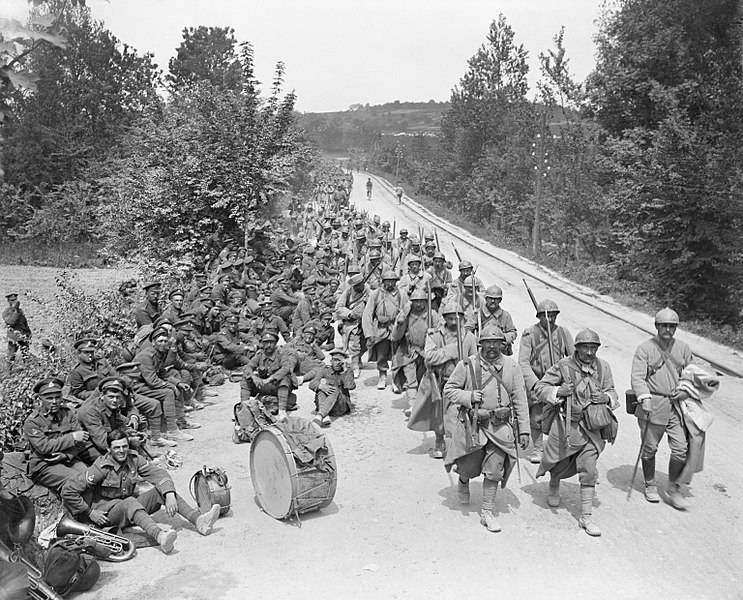
The third battle in the Ene. French infantry on the march, British rest roadside
forces of the parties. Preparation
TO 27 May the Germans have concentrated in the area of the planned strike 34 division (21 - in the first echelon, 7 - Second, 6 - in third), 5263 guns (3632 lungs and 1631 large and extra power), 1233 mortar and about 500 aircraft. They were opposed by the 6th French Army, It is located on a 90-mile front (on the right flank was the 9th British Corps). She was at the forefront 11 infantry divisions, podkreplennыh 31 territorial battalion and 27 machine gun companies of. The army reserve were 4 infantry divisions, in the Reserve Command - 8 infantry and 2 cavalry divisions. The French artillery numbered 1400 guns, aviation - 14 squadrons. German troops in the area had a breakthrough, in this way, double superiority over the enemy in the number of first-echelon divisions and nearly fourfold superiority in artillery.
Terms and conditions for the offensive were challenging. German divisions had to overcome Ellet River, Urk, Vel and wasted. Village full of heights and favored conducting defensive actions. However, the French, Considering its position strong enough by nature, We did not pay enough attention to their engineering equipment. Tactical depth of the French defense was from 8 to 12 km. First reinforced strip to depth 4 km consisted of three or four lines of trenches. Behind it was a second line of defense, consisting of two or three lines of trenches. AT 5 — 6 km behind the second strip had individual resistance nodes. In this case, the French defense continued to be based on old principles hold on no matter what was the first band. That is, the concentration of the main forces of the French in the first defense of the belt allowed the Germans unleash the full power of his fire on this group, to defeat it and to create favorable conditions for further breakthrough.
Based on the experience of fighting in March and April, German command supplements and refines previously issued instructions on conducting offensive combat. Add-ons "were to even greater vacuum infantry, increases in value tactics small percussion groups, to improve coordination of work… infantry artillery ". The new instructions from 17 April 1918 There are two types, the occurrence of: 1) methodical attack against enemy, occupying a continuous reinforced strip, and 2) attack mezhdupolosnogo spaces, not having a continuous front. In the first case applies gain barrage, a single, infantry attack made on precisely developed plan under the direct supervision of the High Command. To attack mezhdupolosnogo space prolonged barrage recognized unnecessary. battlefield success in this case in the absence of the movable fire shaft dependent on the initiative NCO, clearly organized interaction of infantry with artillery support, rapid suppression of the resistance units and the enemy machine-gun nests. Barrage had to go 2 no. 40 min. With the end of the mobile artillery barrage created artillery barrage, which was to advance in leaps 200 m, shared intervals 6 minutes (1 kilometer 40-50 minutes). To keep pace with artillery support, the head of the infantry battalion were attached to an artillery platoon. The infantry units has been increased the number of guns. Machine guns were also armed convoys and transports to protect against attacks by enemy aircraft. The troops received the first anti-tank guns.
Particular attention was paid to the Germans secrecy place and time of the operation. division, designed to strike, We put forward in these areas immediately prior to the attack. Special order of the 7th German army corps headquarters and divisions have been appointed officers, responsible for carrying out measures to ensure the secrecy. In the advanced position of the area forbidden to build structures, that could not be quickly disguise. Was enhanced control over radio- and telephone calls. Secret documents were forbidden to pass below the regimental headquarters. The troops moved only at night. In order to deceive the enemy around the French front defiantly preparing to attack, especially against British troops, where the Allies most expected impact of the Germans. In the 2nd and the 18th German Army deliberately it announced the impending attack. In the rear of Army Group Crown Prince Rupprecht remained strong artillery, organized false troop movements, increased radioactivity. German planes regularly raided the British rear.
This helped to keep the secret to 26 May. Allied command did not expect the impact of the Germans in this area. Here were even laid to rest four British divisions, bloodless battles in Flanders and on the Fox River in April. 25 May the commanders of the British divisions have received from the General Staff of the French Post: "There is no indication, in our opinion, that the enemy had trained, which will allow him to go on the attack tomorrow ". morning only 26 French May, two prisoners were captured, who warned the Allies about the impending attack of the German Army 27 – 28 May. French command quickly start to transfer reserves to the front of the 6th Army and lead its forces on full alert, but take effective measures to counter the threat has not yet managed.
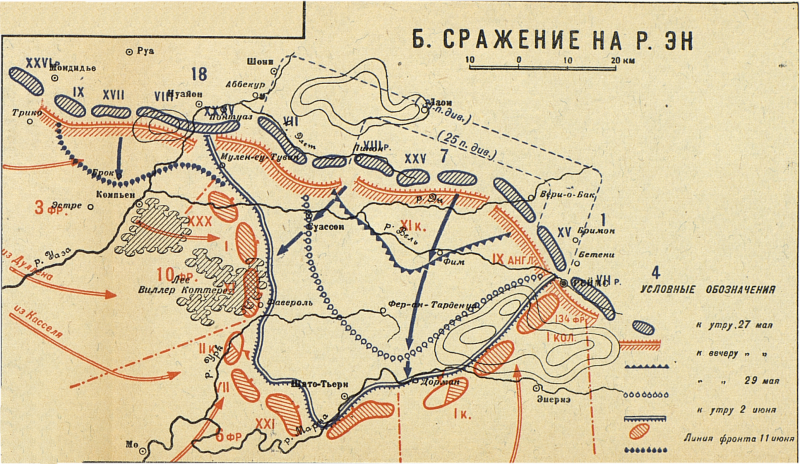
offensive
27 May, at 2 suddenly the night hours, without first zeroing, 4400 German guns opened fire on 71 kilometer front portion between Reims and Soissons. Shooting was conducted on the entire tactical depth defense 6th French army and was corrected by observers from tethered balloons and airplanes. Already in the first minutes on the French positions have been numerous explosions of ammunition. A large number of French guns were destroyed by direct hits. Gaza chemical shells filled the entire area the 6th position of the French army, connection has been broken. the enemy's defense was completely suppressed. Thus began the third stage of the German Spring Offensive on the Western Front.
After more than a two-hour artillery barrage in 4 no. 40 minutes in the morning under the cover of fire shaft to attack the German infantry went. Unlike previous operations barrage was a double. In front of the main barrage, immediately preceding the infantry and consisted of fragmentation projectiles, moving the second barrage of chemical shells, which was to drive the enemy infantry in his shelter and refuge. The French artillery was so paralyzed by short, but powerful artillery barrage, I could not seriously interfere with the German infantry. TO 11 hours troops of the 7th German Army, without encountering serious resistance, captured the Chemin des Dames and out on the river. prizes. The Germans advanced on 8 – 9 km and overcome the main enemy defense line. Capturing bridges over the p. prizes, that the Allies did not have time to destroy, Germans crossed to the south bank. Part of the German infantry broad front continues to rapidly advance to the south. By the end of the day they reached the river. Vel and sometimes forced her.
In this way, results of the first day of the offensive exceeded the expectations of the German High Command. Allied defense was broken through the entire depth. German troops marched into the center of, straight, about 20 km. On the flanks of the allies had stronger resistance. The main goal of the offensive - to delay the allied reserves from Flanders and Picardy - was reached. To the place of a breakthrough is urgently being rushed 10 infantry and 3 cavalry divisions of the 5th French Army.
The offensive continued at night and the next day with the same force. At noon 28 May 7th Army reached the heights south of the. Vel here in accordance with the stopped-up operation. However, the rapid and decisive success of German divisions inspired by the supreme command. AT 14 hours 36 troops min order to continue the offensive was given. Due to the lag wing special attention paid to the development of a breakthrough in the direction of Reims and Soissons, because without this further advance to the south it was a dangerous. The order emphasized the need for mastery of Soissons. In this case, the French will be forced to withdraw its troops from the territory between the rivers Aisne and Oise, which will create favorable conditions for the transition of the 18th Army on the offensive in the direction of Compiegne. The ultimate goal of the operation 18 minutes, 7-th and the 1 st Army was put out to the line Compiegne, Dorman, Epyerne. In this way, operation, planned as an auxiliary and distracting, It developed into a decisive attack with the objective to win as many as possible of the space at the Paris direction.
Particularly resistant battles 28 May went for Soissons. The brunt of the German troops in the area took over the French 39th Infantry Division. Attacked from the front and the flanks, She began to move away to the west to Soissons, opening front. Immediately driving up to the site of the Allied breakthrough division joined the battle parts as arrival and were unable to close the gap, expands with each passing hour. By the end of the day, German troops advanced on 6 — 8 km. The area between the p. Ennoia and Reims 6th French army retreated to fortified positions. Behind her were only advanced fortified lines of Paris. Night 29 May fell Soissons.
Russian military historian, General Andrei Zaionchkovskii, I wrote: "The French have managed to send into battle nine fresh divisions, but they could not adequately organize the management of rapidly retreating troops. As a result, the Germans, demonstrated extraordinary energy, manages the day to move another 6-8 km, widen the front of their offensive to 60 km (in the east to near Reims, and to the west of Pinon) and take for 2 day operations over 20 000 prisoners. In Paris, which is under constant bombardment began again to 210-mm guns, there was panic and the evacuation ".
The French capital of the firing of heavy guns, the city was subjected to raids by German bombers. Because of the risk position 28 May the battle area have been directed more 10 infantry divisions from the Northern Army Group, and 4 Infantry Division and the 2nd Cavalry Corps from the reserve group. However, to the place of the breakthrough they arrived at different times, during 29 of May - 1 June, and parts. The French command had great difficulty in organizing the troops in the attacked continuously and constantly changing front.
29 May the Germans continued the onslaught, progress in central 12 km and reached the line Soissons, west of Fere-en-Tardenois, Betina and continued to advance to the Marne. The French were in no hurry to strengthen the Center, counting, Marne that will stop the Germans, but to continue to strengthen the flanks. in the evening 29 May Petain ordered to move 30 May counteroffensive on the flanks of the German projection and prevent the enemy crossing over the Marne. But the planned offensive did not take place. 30 May the German High Command has expanded the offensive front to battle the left-flank corps of the 18th Army and the right flank of the 1st Army. Especially vigorous offensive developed in a southerly direction and reached the right bank of the Marne. The Germans captured 800 guns, and already 50 thousand. POW (mainly French). But it was the last day of the great successes of German divisions. On the south bank of the Marne the French managed to organize the defense. On the flanks of the German forces have not achieved much success.
31 May the Germans attacked particularly strongly in the direction of Chateau-Thierry. They were opposed by the Moroccan Division. She blocked the highway to Paris and staunchly opposed 3 German divisions. Vskore marokkantsev supported two divisions frantsuzskie. Together with them counter-flange tiralerov, Zouaves (French colonial troops), Russian Legion and threw the enemy. Hard battle the whole day went to Reims heights, but the city itself take and failed.
Battle of Chateau-Thierry continued in the first days of June. Here transferred US troops. Hastily creating new breakthroughs in areas of strengthening the Germans, American soldiers were digging trenches at night with 1 on 2 June, often using some hostility. In such primitive trenches could take refuge only in the supine position. But it was enough, to stop the advance of German infantry and keep the defense in two days. This made it possible to prepare new, more serious defensive line of fortifications near the rear and finally stop the enemy offensive. TO 3 June German divisions close to Paris at a distance 57 kilometers, but they have already exhausted.
The French managed to focus on the front of the large German offensive force, including Americans. The fighting is now more systematically leaked, accompanied by frequent counterattacks and moved into position. German divisions lost their initial impact force, due to the extension of the front of their operational density decreased. A rate of approach of French reinforcements had higher rates of administration of the compounds of German battle. As we approach the Paris intensified the resistance of the French troops. As a result, the balance of power gradually changed in favor of the Allies. Also on the course of the German offensive adversely affect constant backlog flanks. Poor was the case with the work of the rear. have progressed to 60 km of the central body of the 7th Army experienced great difficulties in supplying, which was carried out on only the broad road to the east of Soissons. In the days following the onset fades, a 5 June first stops on the flanks, and then in the middle. 6 June 1918 , the German Command ordered all troops to stop at the achieved boundaries.
British military historian Neil Grant noted: "The advantage of attack, as well as two previous offensives, It lies in its suddenness. This front portion is not considered as a possible British battlefield, because here often sent troops, who needed rest. But when the Germans moved west towards Paris, they came upon a defensive ring, hastily erected Petain and subjected to fierce attack of the 2nd American Division in a strategic location in Chateau-Thierry ".
To eliminate the threat of the right wing of the 7th Army in the area of Soissons and straighten the front between the projections in Amiens and Chateau-Thierry German command made 9 — 13 June offensive of the 18th Army on the River. Oise in the general direction of Compiegne. But this time the Germans were unable to create a significant numerical superiority. 21 Division 18th German army confronted a 33-mile front from Montdidier to Noyon 15 divisions and 4 tank groups (160 tanks) 3-th French army. Preparation for the offensive was carried out hastily, without observing the necessary secrecy. Aerial reconnaissance revealed the French training Germans. These data are confirmed by the testimony of prisoners. Therefore, the French command, taking into account the experience of the Battle of the Aisne, start translating the bulk of the troops of the 3rd Army in the second position and gave the necessary orders to conduct artillery counter.
9 June night began barrage and 4 o'clock 20 min German infantry went on the offensive. Germans during the first two days wedged in the French position on the 10 km. Before Compiegne was only 7 km. However, in the morning 11 June 4 French divisions supported by tanks counterattacked the Germans and some pressed their. 13 June 18th offensive of the German army was stopped, reaching task.
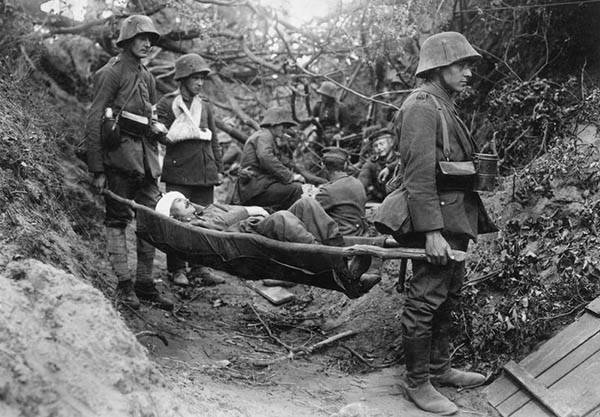
German soldiers, wounded during the Battle of Ene. June 1918 of the year
results
As a result of the offensive 27 of May - 6 June 1918 the German army broke the French defense on the 80-mile front and deeper into their location on 60 km. Paris is already getting out long-range guns. The main objective of the operation - to pull from the English front reserves - has been achieved. but the Germans, after the first great success, We went on the offensive and were not able to achieve the defeat of the enemy.
Militarily, because of the precise organization of an artillery barrage and good tactical training German troops showed an unprecedented pace for the Western Front offensive: 20 km - on the first day and 10-12 km - on the second day. Promotion facilitated by the largely, that the French command concentrated the main forces of the 6th Army at the first position. This facilitated the task of the Germans by their rapid defeat. A role played by the, that the French commanders did not have time to destroy the bridge over the river. prizes. Further, the French had to quickly throw reinforcements and German troops were exhausted, lost punching power and numerical superiority, They failed to keep the gap and develop the attack on Paris. front stabilized. Allied losses were about 127 thousand. human (France - 98 thousand., Britain - 29 thousand.). German troops also suffered heavy losses-about 100 thousand. people killed, wounded and prisoners. German army losses in the battle on the river. Oise with 9 June amounted to 25 thousand. human, French - about 40 thousand.
In this way, offensive 27 of May - 13 June worsened the overall strategic position of the German Army on the Western Front. By the projections at Amiens and in Flanders now also added the protrusion of the Marne, which significantly increases the overall length of the front and require large forces to hold it. Besides, the presence of the projections provided allies a convenient base for counterattacks the flanks of the German troops.
Thus ended the last battle in a series of battles collectively called spring offensive the Germans. operations tactical success is obvious: German army took up in all the battles, and moved some borders over 50 km, dead, wounded and prisoners lost more allies 850 thousand. human. However, the German losses were almost the same: about 700 thousand. human. strategic objectives, puts the German General Staff to troops, They were not fulfilled. Allied forces could not dismember, British "thrown into the sea", and the French to drop to Paris and to force the world to ask. At the same time, Germany has invested in these operations all the remaining forces and funds, He has exhausted almost all its reserves. It played a negative role, and the Austro-German intervention in Russia, has absorbed a significant number needed in France and cavalry divisions, which is not allowed to throw reserves and cavalry into the breach and strike first successes. The blockade and the long war had exhausted the military and economic potential of Germany. And the Allies were able to recuperate due to lack of blockades, relations with the colonies and with powerful United States. In France, a steady stream of American divisions were. As a result, American aid was a decisive factor in the war of attrition, in which the Germans almost completely spent its resources.
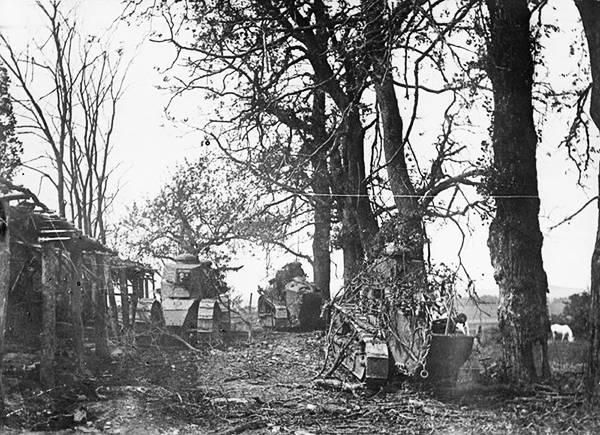
Renault FT-17 French tanks are in the reserve during the Battle of Ene. May 1918 of the year







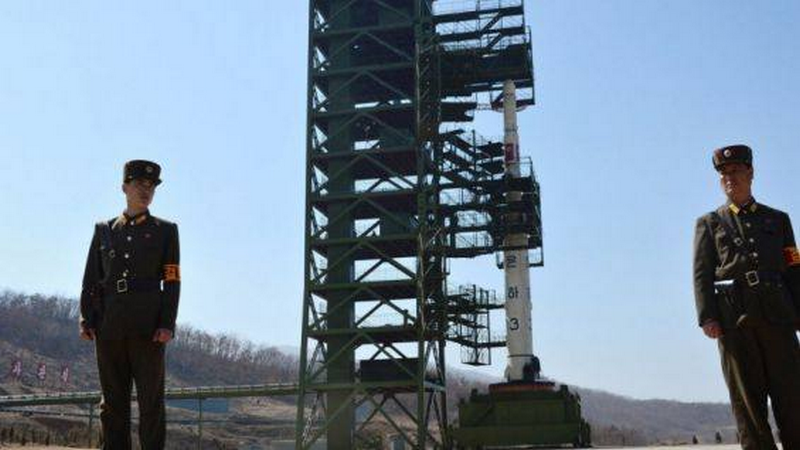




And again,as always,Russian soldiers saved these Agen